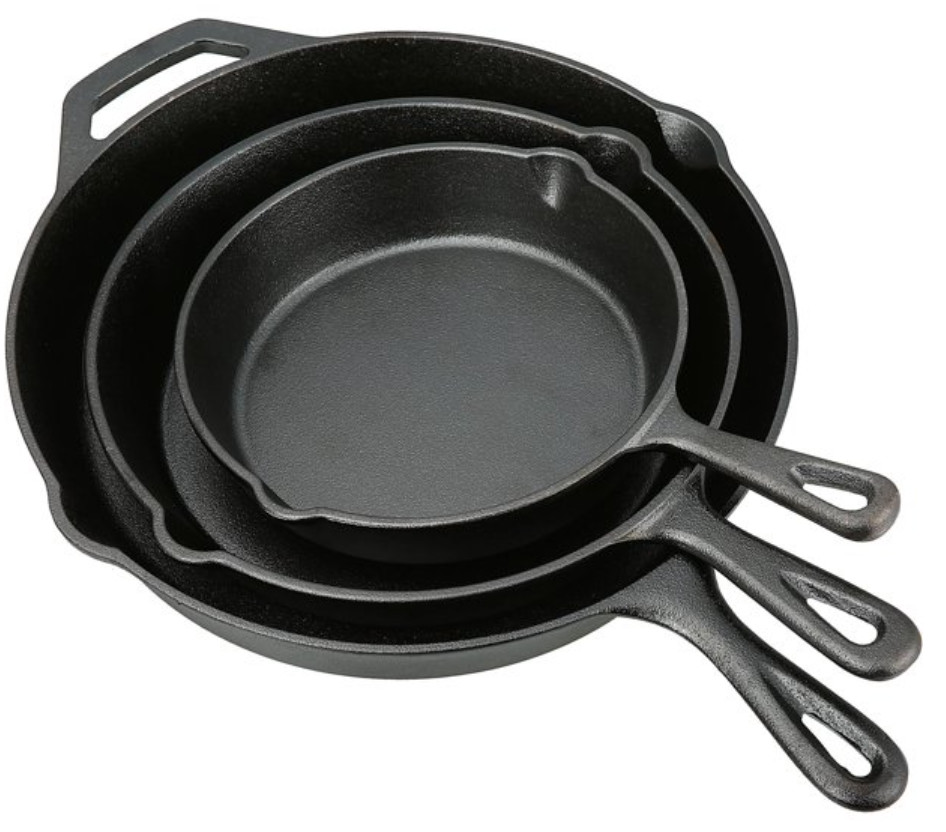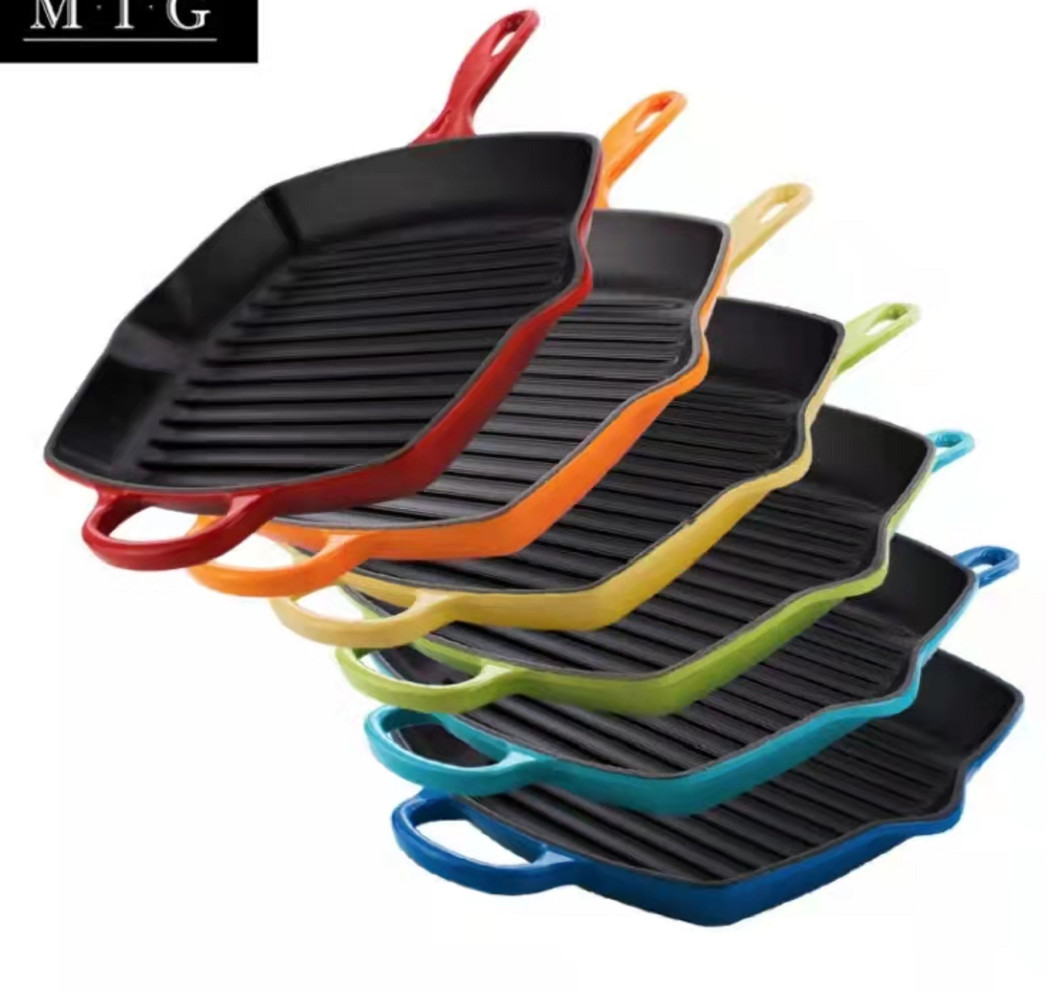- 150m Timog, West DingWei Road, Nanlou Village, Changan Town, GaoCheng Area, Shijiazhuang, Hebei, China
- monica@foundryasia.com
Hun . 12, 2023 18:48 Bumalik sa listahan
ANO ANG CAST IRON COOKWARE
Ano ang cast iron cookware:
Ang cast iron cookware ay heavy-duty cookware na gawa sa cast iron ay pinahahalagahan para sa pagpapanatili ng init, tibay, kakayahang magamit sa napakataas na temperatura, at non-stick na pagluluto kapag maayos na tinimplahan.
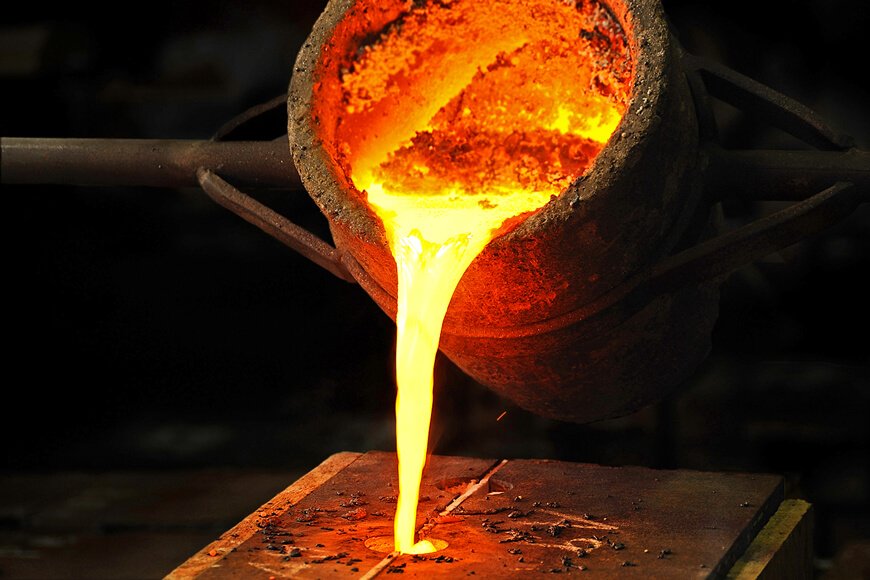
Kasaysayan ng cast iron cookware
In Asia, particularly China, India, Korea and Japan, there is a long history of cooking with cast iron vessels. The first mention of a cast-iron kettle in English appeared in 679 or 680, though this wasn't the first use of metal vessels for cooking. The term pot came into use in 1180. Both terms referred to a vessel capable of withstanding the direct heat of a fire. Cast-iron cauldrons and cooking pots were valued as kitchen items for their durability and their ability to retain heat evenly, thus improving the quality of cooked meals.
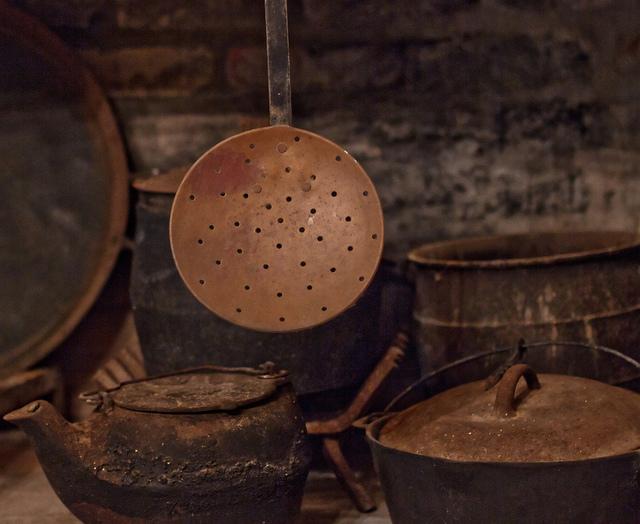
Sa Europa at Estados Unidos, bago ang pagpapakilala ng kalan sa kusina sa kalagitnaan ng ika-19 na siglo, ang mga pagkain ay niluto sa apuyan, at ang mga kaldero at kawali sa pagluluto ay idinisenyo para magamit sa apuyan, o upang masuspinde sa loob nito.
Cast-iron pots were made with handles to allow them to be hung over a fire, or with legs so that they could stand in the coals. In addition to Dutch ovens with three or four feet, which Abraham Darby I secured a patent in 1708 to produce, a commonly used cast-iron cooking pan called a spider had a handle and three legs allowing it to stand upright over campfires as well as in the coals and ashes of a fireplace.
Ang mga kaldero at kawali sa pagluluto na may walang paa at patag na ilalim ay ginamit noong naging popular ang mga kalan sa pagluluto; ang panahong ito ng huling bahagi ng ika-19 na siglo ay nakita ang pagpapakilala ng patag
cast-iron skillet.
Ang cast-iron cookware ay lalong popular sa mga maybahay noong unang kalahati ng ika-20 siglo. Ito ay isang mura, ngunit matibay na kagamitan sa pagluluto. Karamihan sa mga sambahayan sa Amerika ay mayroong kahit isang cast-iron cooking pan.
Ang ika-20 siglo ay nakita din ang pagpapakilala at pagpapasikat ng enamel-coated cast-iron cookware.
Today, of the large selection of cookware that can be purchased from kitchen suppliers, cast iron comprises only a small fraction. However, the durability and reliability of cast iron as a cooking tool has ensured its survival. Cast-iron pots and pans from the 19th and 20th century continue to see daily use to the present day. They are also highly sought after by antique collectors and dealers. Cast iron has also seen a resurgence of its popularity in specialty markets. Through cooking shows, celebrity chefs have brought renewed attention to traditional cooking methods, especially the use of cast iron.
Mahahalagang produkto
Kasama sa mga uri ng cast iron cookware ang mga kawali, Dutch oven, griddle, waffles iron, panini press, deep fryer, woks, fondu at potjie.
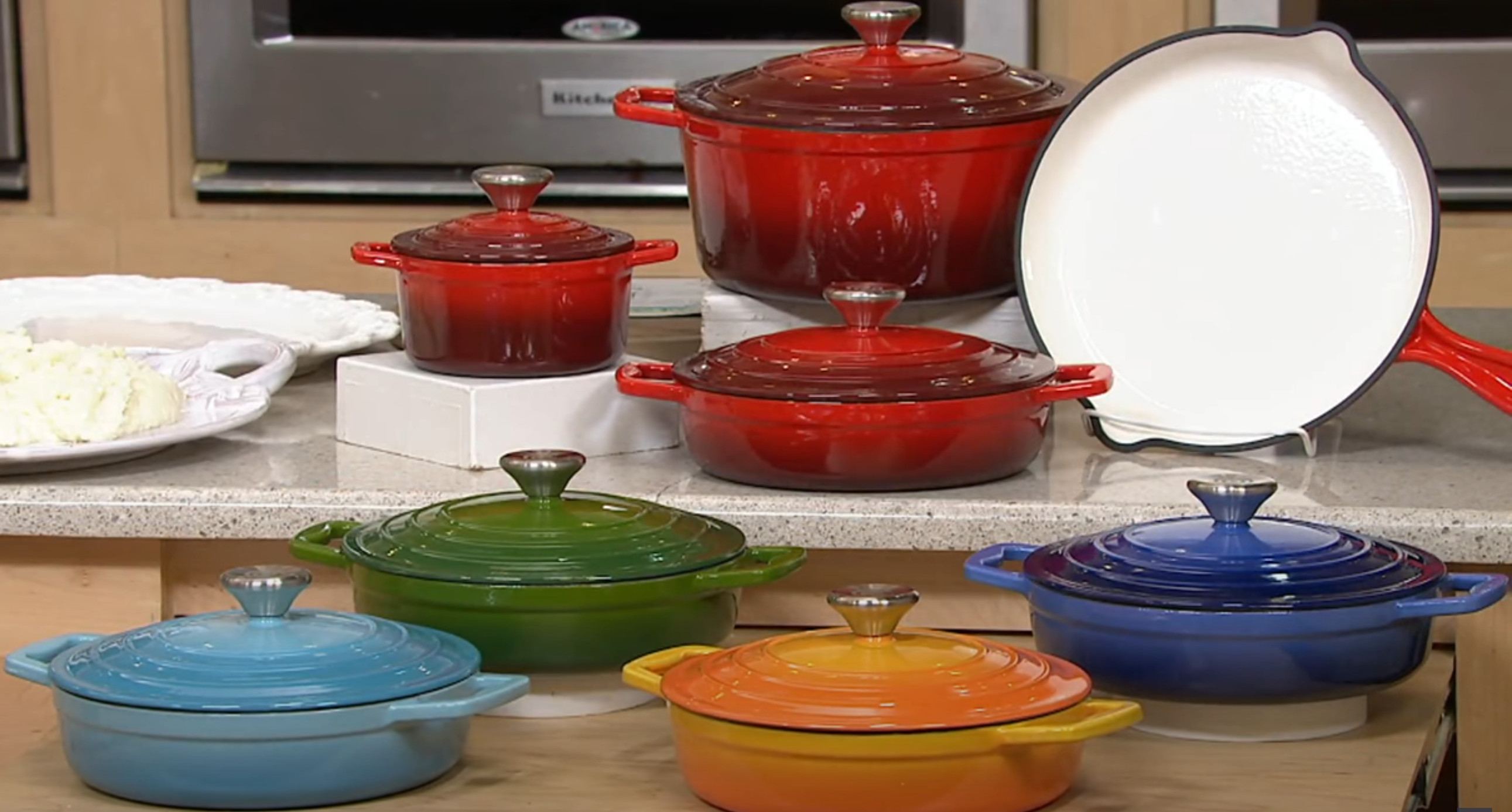
Mga benepisyo ng cast iron cookware
Cast iron's ability to withstand and maintain very high cooking temperatures makes it a common choice for searing or frying, and its excellent heat retention makes it a good option for long-cooking stews or braised dishes.
Because cast-iron skillets can develop a "non-stick" surface when cared for properly, they are excellent for frying potatoes or preparing stir-fries. Some cooks consider cast iron a good choice for egg dishes, while others feel the iron adds an off-flavor to eggs. Other uses of cast-iron pans include baking, for instance for making cornbread, cobblers and cakes.
Many recipes call for the use of a cast-iron skillet or pot, especially so that the dish can be initially seared or fried on the stovetop then transferred into the oven, pan and all, to finish baking. Likewise, cast-iron skillets can double as baking dishes. This differs from many other cooking pots, which have varying components that may be damaged by the excessive temperatures of 400 °F (204 °C) or more.
-
Product introduction of Changan Cast Iron Co., LTD
BalitaJan.24,2024
-
The Impact of the Leidenfrost Effect on Non-Stick Properties of Cast Iron Titanium Coated Cookware
BalitaJan.24,2024
-
Pag-explore sa Culinary Divide——Cast Iron Casseroles vs Regular Casseroles
BalitaEne.03,2024
-
Packaging Workshop na Muling Inayos gamit ang Shelving at 3D Storage para sa mga Goods
BalitaDis.29,2023
-
Ang paglilinis ng ginamit na cast iron enamel pot ay maaaring gawin nang epektibo sa mga sumusunod na hakbang:
BalitaDis.27,2023
-
Metallographic Structure para sa enamel sa cast iron
BalitaDis.27,2023
